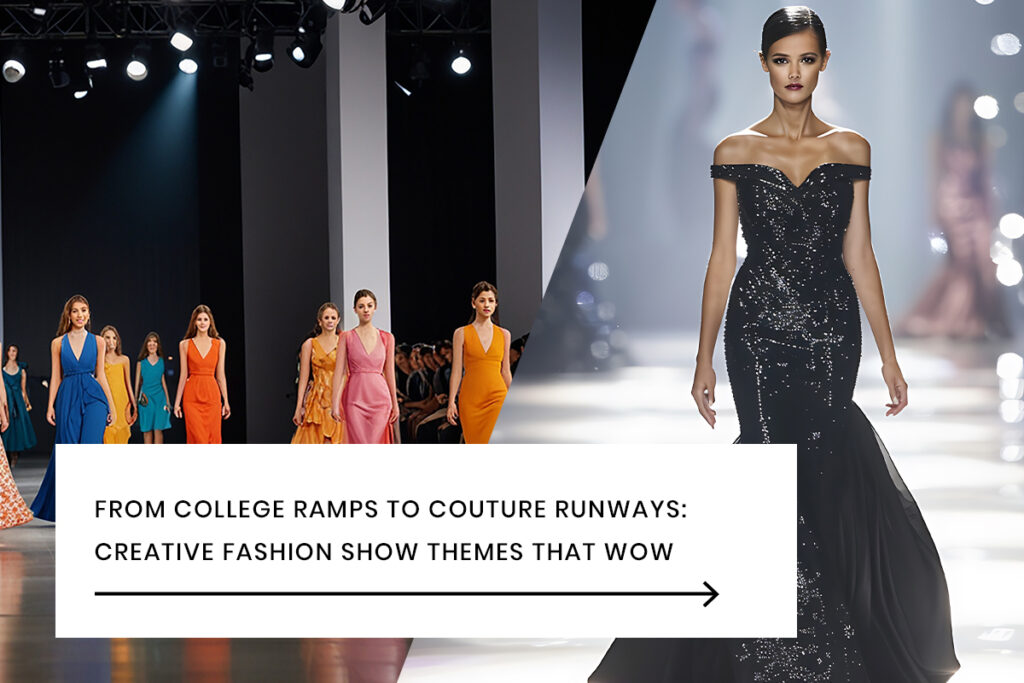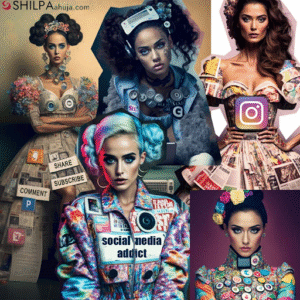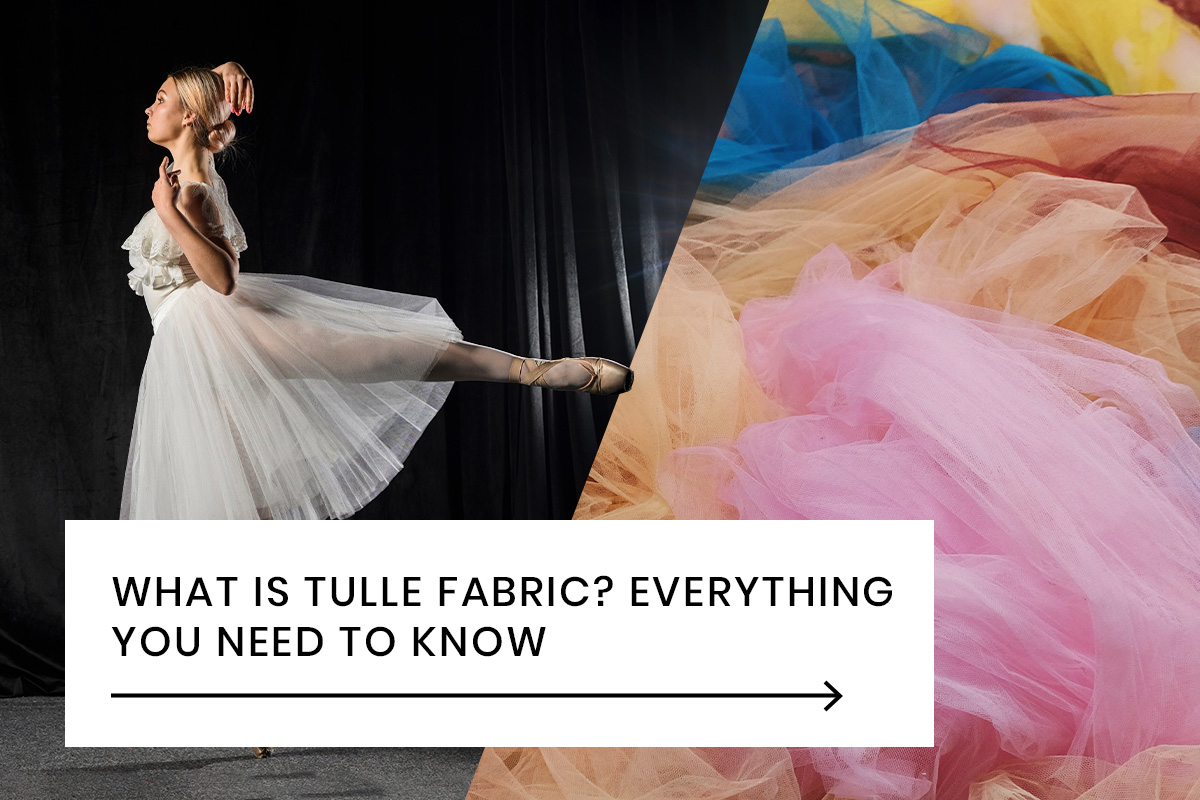Introduction:
Fashion shows are an ideal way to tell the fascinating and important story behind new trends. Designers will present their latest works while generating a depth of press coverage and showing the creative energy of the contemporary fashion scene. These aspirational occasions both create excitement and can also act as an artistic statement.
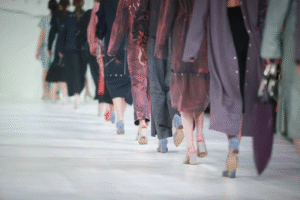
The importance of selecting a theme cannot be overstated, especially with the call for codification in fashion today. Fashion shows have now become “much more of a spectacle than they once were,” and ultimately, in contemporary incarnations, fashion shows are about art.
Why Fashion Show Themes Matter
A fashion show is nothing without themes, the backbone of any great show. They provide balance and cohesion, turning a runway of clothes into a narrative. A fashion show without a conceptual theme feels like disconnected looks instead of an experience of well-thought-out fashion.
A well-executed theme feeds the appetite for more than just visual consumption. It engages multiple senses, provokes emotions, and creates lasting memories. A show with design without this guiding theme has the potential to entertain, but often lacks the human layers that add to the depth of an experience.
A perfect example of this is the Met Gala, described by some as “fashion’s biggest night.” Each year, the Gala has a well-appointed theme- from “Heavenly Bodies: Fashion and the Catholic Imagination” to “Camp: Notes on Fashion.” These themes shape not only the outfits of attendees but also the ambience, staging, and cultural conversation of the event. Without a strong thematic lens, the Met Gala becomes a chic red carpet; with a theme, it becomes a cultural moment that elevates fashion into art and storytelling.
Classic & Evergreen Fashion Show Themes
1) Vintage vs. Retro: Why are they back in style?
Vintage and retro styles can often bring the magic of former decades into the wardrobe of today. They offer nostalgia, imaginative creativity, and individual expression – whether in the romantic flow of a 1950s dress or the thick fibers and bold prints of the 1970s.
The beauty of vintage lies in its authenticity. These are original pieces from another time, often rare and one of a kind, that effectively allow you to embody another era with every fit. This is fashion that tells a story.
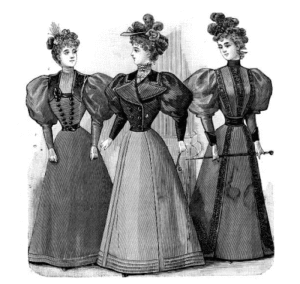
2) Black-and-white:
This theme is often used because of its clarity and potency. Its stripped-down manner eliminates distraction, so the viewer is invited to focus more on its formal qualities, details, and emotion. This timeless aesthetic provides a base that is clean yet impactful – a combination that continues to captivate.
By eliminating color from consideration, attention shifts to contrast, texture, and silhouette – all of which provide a sense of bold refinement without being limited to color. This simplicity invites the audience to look deeper, making every detail of the garment stand out. As a show theme, black and white represent the epitome of classic elegance.
3) The Colours of Nature:
Florals, forests, oceans, desert vibes – The colors of nature bring fashion into focus…from the calm blues of the ocean, the earthy greens of the forests, the warm oranges of the deserts, and the delicate shades of uplifting florals. Every colour represents a feeling, mood, and meaning, making the designs effortless and timeless
As a show theme, The Colours of Nature embraces variety and depth. It embodies fashion to the earth, representing feeling, exuberance, and the rhythm of changing seasons.
4) Cultural Extravaganza: Indian Heritage, African Prints, Japanese Kimonos
Cultural influences add value and dimension to the runway. From the majestic majesty of drapes from India to the bold colours of African textile prints to the calm simplicity of Japanese kimonos, these styles can be seen as heritage as an art form. Each detail can tell a story of heritage and then be reinterpreted for modern applications as well.
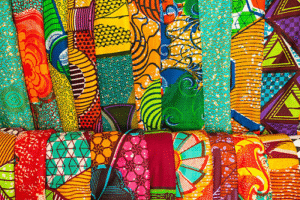
Takeaways
- Connection to varying cultures through international styles.
- Celebration of craft and tradition in a contemporary frame.
- Renowned runways feel like a cultural experience.
5) Seasonal Glamour: Spring Bloom, Autumn Leaves, Winter Wonder
The seasons offer an inspiration to fashion that is timeless. Pastel florals mimic the freshness of spring; earthy layers tap into the warmth of autumn; icy textures sparkle with the magic of winter. It situates the audience as part of the natural cycle of fashion’s relationship to the cycles of nature, giving a soft reminder of our collective belonging to parts of life’s natural cycles.
Key Takeaways
- Creates the beauty and feeling of each season.
- Permits endless versatility in colors, fabrics, and feelings.
- Fosters a runway show that feels both natural and magical, enchanting.
6) Masquerade Ball: Mysterious, Dramatic, Luxurious
The use of a masquerade theme gives us drama, mystique, and a sense of luxurious, theatrical, time-honored tradition. Fashion is framed by oversized masks, lavish dresses, and low lighting to create a dark and luxurious feeling of mystique – a fabulous runway stage of elegance. Fashion as a means of performative art: each look feels like it is a secret waiting to be exposed.
Key Takeaways
- Adds an organic sense of performative intensity.
- Adds elegance and still has a secretive undertone.
- Keeps all spectators absolutely spellbound by the mystery and glamour
7) Hollywood Red Carpet: Celebrity-Inspired Themes
Few things evoke glamour in fashion quite like a Hollywood red carpet. With shining gowns, crisp tuxedos, and an air of camera-ready confidence, the runway transforms into the backdrop for a glamorous night. The red carpet theme embodies a sense of aspiration, inviting audiences to witness fashion’s most legendary moments up close.
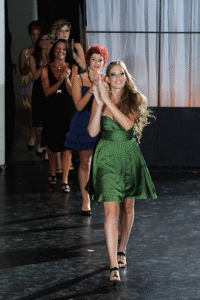
Key Takeaways
- Embodies the peak of glamour and star power.
- References iconic celebrity looks and bold stylistic statements.
- Creates a brilliant, aspirational atmosphere.
Unique & Creative Fashion Show Themes
1. Futuristic Fantasy: Robots, Metallics, Space Odyssey
A futuristic theme pushes fashion into tomorrow, with metallic fabrics, robotic silhouettes, and cosmic-inspired designs. It transforms the runway into a space odyssey where imagination meets innovation. Designers like Balenciaga have explored dystopian and futuristic visions, proving how technology and creativity can merge seamlessly.
2. Under the Sea: Marine Life, Corals, Mermaid-Inspired
Inspired by oceans, this theme celebrates the beauty of marine life – flowing fabrics mimic waves, shimmering sequins evoke fish scales, and coral-inspired textures bring depth. Runways become aquatic dreamscapes, transporting audiences into an underwater fantasy.
3. Mythology & Folklore: Greek Gods, Indian Epics, Norse Legends
Fashion finds endless inspiration in mythology, where each look channels divine strength and timeless tales. From flowing gowns inspired by Greek goddesses to bold armor-like silhouettes echoing Norse legends, this theme blends history and imagination. It allows designers to reimagine epic stories through style.
4. Fairy Tale Fusion: Cinderella with a Modern Twist, Red Riding Hood Chic
Fairy tales meet high fashion in a whimsical showcase. Classic characters are reinvented with bold cuts, playful details, and a modern edge. Think glass slippers reimagined as crystal boots or Red Riding Hood’s cloak turned into a chic statement cape. It’s nostalgia wrapped in fantasy and couture.
5. Streetwear Aesthetic: Hip-Hop, Skate, and Graffiti Backdrops
Streetwear on the runway brings that raw energy and attitude to life. An oversized hoodie, some sneakers, and some graffiti-inspired prints take typical wear and transform it into bold fashion statements. When combined with urban backdrops and the musical backdrop of hip-hop, this theme embodies a style that originated on the streets and translates into global fashion.
6. Tech Couture: Wearable Tech Devices, LED-Encrusted Clothing, or AI-Inspired Design
Tech couture combines the worlds of technology and couture, uniting innovation with art. Technology allows for glowing garments with the use of LED strips, fabric that incorporates smart textiles into garments, and designs that are inspired by advancements in AI. Tech leverages the creativity of the designer, allowing fashion to advance in a whole new direction of creativity and expression, as shown in Balenciaga’s collection, which was influenced by the cyber world.
7. Abstract Art on the Runway: Cubism or Surrealism, or Impressionism
When art movements intersect with fashion, clothing becomes a form of art, and the runway becomes a walking gallery that pays tribute to the most revolutionary artists in the world. Overall, cubist shapes, surreal designs, and impressionist color palettes create an abstract, unconventional look that is bold and purposeful.
8. Around the World in 80 Outfits: Inspired by the Global Community
When fashion describes diversity, it is most often in relation to color, shape, or use. Each of the looks in this category represents a different culture: a gown inspired by a kimono, a lehnga embroidered in the Indian tradition, or a dress adorned with African tribal prints. The runway is converted into an international itinerary of culture and style. The theme also brings awareness to the conscious and deliberate inclusion of content from a diverse range of backgrounds. Fashion is about diversity and is a universal language.

9. Sustainable Fashion: Recycled and Upcycled Styles
Sustainable remains in the forefront and writes this section with recycled textiles, upcycled garments, and eco-conscious materials. This theme demonstrates that fashion can embody conscientiousness while still being stylish. Designers such as Stella McCartney have brought you this style movement. And, it proved that feeling good about your choices can be fashionably astonishing too!
Themes for Fashion Shows in College
Themes give college fashion shows direction and energy, turning a simple ramp walk into a creative experience. The right theme adds fun, meaning, and storytelling, making the show memorable for both participants and the audience.
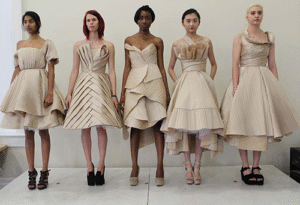
a) Campus Cool: Chic Casual inspired by the college campus
This theme takes the ubiquitous feel of the campus into the runway (think denim jacket, graphic tee, sneakers, and a backpack) but “shops the runway.” It’s fun, relatable, and easy chic that is quintessential fashion for student life.
b) Pop Culture Parade: TV, Anime, K-Pop & Super Heroes
From Marvel superheroes to K-pop idols to anime, this theme features all things that students adore in their culture. Bright, fun, and recognisable fun are all features of this theme that will create a runway of organisations, fun with high-energy fandom.
c) Fantasy v. Reality: A Problem of Two Realms
One side of the outfit is simply a camouflage of the reality of today – maybe a sharp tailored look or whatever one wears in life – and the other side is exploding with fantasy – think armor, wings, or difficult motifs. It is the contrast that will leave the audience questioning which side they love more.
d) DIY Couture: Style with the Common Items
Newspapers, cardboard, bottle caps, and items. All are introduced into crazy, bold outfits that stretch the imagination of boldness. This theme also shows how couture can come from anywhere, all joined in a world of innovation, sustainability, and artistry in the fashion sense.
e) Festival Fusion: Colors & Glam of a Celebration
Runway meets festivity, and designs are inspired by the glitter of Diwali, the pop of color of Holi, and the sparkle of Christmas. Outfits have an air of joy, turning the stage into a celebration of culture and style.
f) Icons of Influence: Tributes in Fashion
This theme celebrates individuals like A.P.J. Abdul Kalam, Mother Teresa, or Steve Jobs, by bringing their symbolic impact to life through fashion. Outfits may represent those who impacted the world through the use of color, identifiable objects, or storytelling elements.
Advice for College Event Planning Considerations
Impressive but low-cost decoration:
Use existing props, student-generated art, colored lighting filters, or inexpensive decor materials to achieve high impact, regardless of low costs.
Students as collaborators:
Involving arts, design, technology, and/or music within your college will add vibrancy and inventiveness to your event while engaging your attendees.
Judging criteria:
Look for creativity, the connection to the theme, presentation, and relevant innovative thinking – not for beauty – in your review process. Then, find ways for everyone to perform!
Fashion Show Themes with a Social Message
Outfits using recycled fabrics, upcycled clothing, or all-natural materials to convey that fashion can be sustainable and/or eco-friendly. The message being expressed: grooming and/or fashion does not need to hurt the earth!
1. Gender Equality: Labels in Fashion
Outfits with “men’s” and “women’s” as well as combining casual and dressy styles are a reminder that fashion has no sex or gender. Wide-cut tops, liquid movement, and unisex designs may further the freedom to choose.
2. Body Diversity: Everyone’s Shape is Fashionably Well
Runway events have been showing that wearing someone else’s body type is simply not accurate. We do not wear someone else’s body. For example, petite versus plus size conveys the simple message to embrace confidence, and that with confidence, you should feel comfortable and better while just being you.
3. Defying Stereotypes: Fashion Beyond Limits
The act of challenging or disrupting cultural and social ideas about “what to wear” becomes a statement. Clothing can blend traditional and contemporary or use unconventional approaches to demonstrate that self-expression has no boundaries.
4. Mental Health Awareness: Fashion for Feelings
Clothing that conveys emotions- colours can symbolise happiness, textures can represent stress, and silhouette shapes can show resilience- makes a huge statement. Fashion becomes a voice for issues that too often go unvoiced.
5. Unity in Diversity: Fashion Celebrates Cultures Together
A multicultural runway shows that fashion connects people. It is a celebration of differences that join as one, from saris to kimonos to prints from Africa.
6. Anti-Bullying/Anti-Violence: Fashion for Courage
Strong silhouettes, bright and bold prints, and “empowering” messages on clothing can amplify the voices of courageous young people speaking out against bullying and violence. The walkway becomes a courageous space for solidarity.
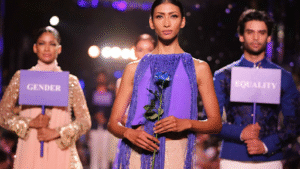
Real-World Examples
- Fashion Revolution arose from the Rana Plaza catastrophe in Bangladesh and has resulted in a movement for ethical fashion and fair working conditions.
- Stella McCartney and other designers aim for sustainable fashion and stylish sustainability, proving you can “look good and do good.”
- Many of today’s global runways have plus-sized models and gender-fluid models; can you say “inclusiveness”?
The Utilisation of Fashion to Raise Awareness: College Students & Colleges:
- Fashion with a purpose: Choose social issues and create a creative fashion show.
- Handmade: Use materials that are recycled or everyday materials to demonstrate sustainability.
- Collaboration: Invite departments of the arts, drama, music, etc., to enhance the experience.
- Message on the runway: Integrate short talks, posters, or videos discussing the cause during intermissions.
How to Choose the Right Fashion Show Theme
A strong theme is the foundation of any successful fashion show. It helps lay the groundwork for the audience experience and design decisions, and shape the overall experience from start to finish. Selecting an appropriate theme takes both creativity and planning. Here are some considerations:
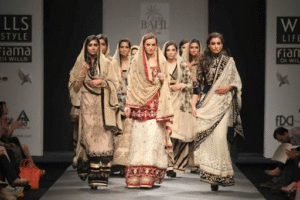
Know Your Audience
Think about who the audience will be: students, industry audiences, or the public… If a theme resonates with the audience’s personal tastes and preferences, it produces a higher impact for your show.
Respect the Collection
The theme should highlight the inspiration, the essence, of the clothing designers (when the clothes are bold and edgy, futuristic theme works… when they are soft and flowing, nature), be sensitive to the clothing designer’s vision
Pay Attention to Current Trends
Look to what is trending globally (the sustainability movement, diversity and inclusion – this includes cool and current), or draw on pop culture (the diversity theme, hip hop- 40th anniversary). If themes resonate with what’s current, they carry excitement and energy.
Think about a realistic implementation
While your theme may feel large, outside the box, consider if it is practical to implement for your event, budget, venue, and colleague resources. The theme should be realistic, while still staying engaging.
Evoke Emotion
The best themes elicit an emotion in the audience… nostalgia, awe, excitement, and even inspiration. Select a theme that establishes an emotional memory, versus simply a visual memory.
Tips for Executing a Fashion Show Theme
Not only are fashion shows exciting to organise, but they can also be overwhelming. It takes vision, creative cooperation, and smart planning. Here is how to ensure yours is memorable this year:
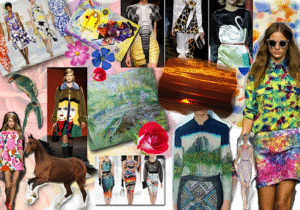
1) Select a theme
A great fashion show always starts with a theme, regardless if it ties in minimalism, cultures, or futurism. A theme creates continuity and helps the audience create a memory of your show.
2) Picking a venue
The venue is where it happens, literally. The venue you select must be convenient, adequate size for your audience, and match the space to your show. Properly selecting a venue maximizes the runway and guest experience.
3) Planning ahead and budgeting
Plan earlier than you think. Always list the needed elements – models, lights, music, décor, stage – then budget accordingly. Budgeting will help you remain consistent and avoid rushed decisions.
4) Plan for your vendors
Every great show has a great team behind it. Having team members properly vetted will alleviate the stress to coordinate the lighting, sound, stage management, and make-up as one. There are many areas to focus on that the experienced vendor can help with or remind you about. Therefore, it’s best to build time and consider having them collaborate with you and each other for the best result
5) Plan for your runway and back of house
A luxury fashion show always starts on the runway; in whatever context possible, with the brand identity. The runway is critical to how your show will be perceived by the audience. Therefore, thinking about the length and width of the runway, the type of music, and the type of light will need to be considered.
6) Select Appropriate Models
Models are the medium for bringing designs to life. You want someone who is professional and confident on the runway and can do different looks. A model can elevate your designer’s vision in an instant.
7) Run-Throughs and Dress Rehearsals
Arrange for you and your team to get some practice runs with your models so you can work out any kinks. A complete dress rehearsal may take a chunk of time, but by including music, lights, and outfitting, it can help identify and address problems before the show.
8) Marketing and Promotion
You want to build anticipation early. Providing all the right information on social media, pushing out posters on campus, and building some buzz in general will go a long way. Working with influencers, student bloggers, or fashion and arts enthusiasts can help build excitement and ensure you have an audience on the show night.
9) Work with Sponsors
Sponsors pull in all sorts of financial and material support for your show. In exchange, you can give them branding opportunities – by featuring logos of sponsors on your page, hanging up a banner, shouting them out on the microphone, or giving them digital space to promote their brand. Building strong partnerships will help you by helping to alleviate the budget process and credibility in the fashion show planning process.
10) Hire (or Be) an Event Planner
Coordinating models, vendors, rehearsals, and sponsors is a huge task. If your budget allows, you can bring in an experienced event planner to help keep checklists and ordering on track. Or you can designate a detail-oriented student lead to help carry that responsibility.
11) Post-Show Follow-Up
Just because the light’s out at the end of the show doesn’t mean you don’t maintain the connection. Share photos and videos, thank your sponsors and attendees, and seek feedback. With planning, creativity, and attention to detail, your fashion show can go from just another event to an unforgettable spectacle.
Conclusion:
Themes are more than just decorations or backdrops in a fashion show – they are the pulse of the event. A well-considered theme gives the event structure, informs design choices, and creates a narrative that unifies the models and spectators from the runway to the audience. This is the factor that elevates a collection of garments into a thoughtful, unified performance.
What gives themes such potency is their ability to unleash creativity. Themes range from nostalgic vintage and retro revivals to daring futuristic fantasy and allow for designers, models, and organisers to find opportunities for innovation and playfulness. A well-considered theme can elevate a fashion presentation of clothing into a memorable experience of art, culture, and innovation.
It’s your turn-what’s the best fashion showcase you’ve been to? Leave your thoughts on your favourite themes or occasions in the comments. Your ideas could inspire future unforgettable runways.
FAQs:
1) What is the significance of incorporating a theme in a fashion show?
A theme will guide the entire fashion show experience, including all aspects from décor to lighting, to music, and even the models’ costumes. A theme provides consistency and will help guests remember their experience.
2) How do I decide on a theme for my fashion show?
Think about the audience, the designer’s vision, trends, and your resources. The best themes combine creative thought with practical thinking.
3) Will the theme have an impact on the outfits being designed?
Yes, designers typically interpret their collection as a response to the theme, using an appropriate color, fabric, and silhouette that coincide with the theme.
4) What are some common themes used in a fashion show?
Nature’s Palette, Futuristic Fantasy, Masquerade Ball, Hollywood Glam, Streetwear Culture, and Cultural Extravaganza are some frequent favourites.

